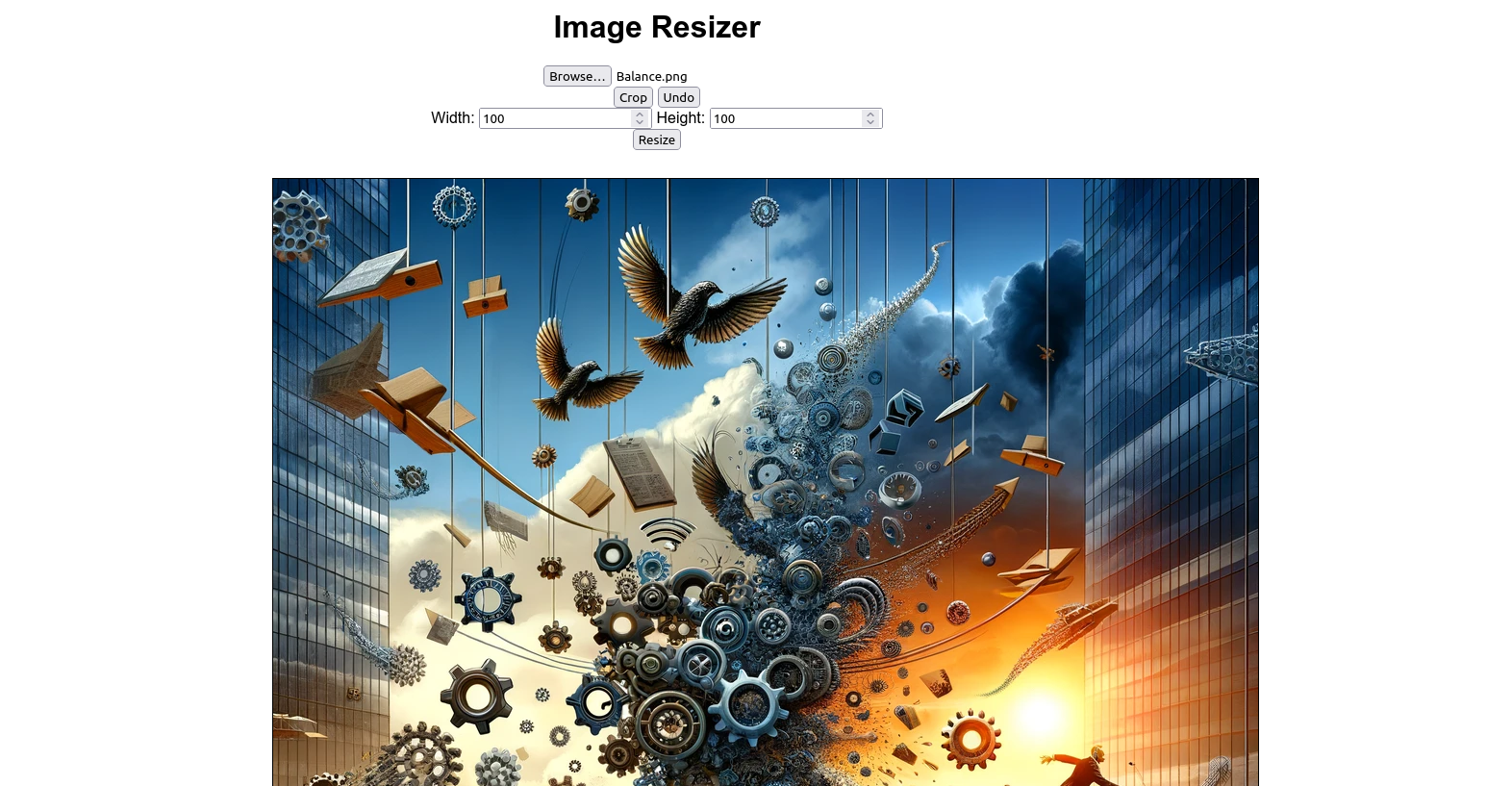Efficient Web Image Resizing Simplified
The Image Resizer is a tool crafted to enhance the efficiency of digital content creation, particularly the process of preparing images for blog posts. Designed with a focus on simplicity and ease of use, this Application allows users to resize images quickly and accurately, ensuring they fit the required formats for online publishing. The following discussion outlines the development process of the Image Resizer, its key features, and the user experience considerations that informed its design.
Something you may see in my writings: if you see an image that ends with an _RS, I’ve resized it using this app. 🙂
You can find the Github repository here.

In developing the Image Resizer, I aimed to create a streamlined and efficient tool for resizing images, specifically tailored for use in blog posts. The interface is designed to be user-friendly and intuitive, ensuring that users can easily navigate and utilize the tool without unnecessary complexity.
Built on
The Image Resizer application is built on HTML, CSS, and JavaScript, each serving a specific function:
-
HTML (HyperText Markup Language): This is the core structure of the application. It defines the layout and elements such as headings, input fields, buttons, and the canvas area where image manipulation takes place. The
<!DOCTYPE html>declaration and the<html>tag with its nested<head>and<body>elements organize the application into configuration and interactive content sections. -
CSS (Cascading Style Sheets): Linked via the
styles.cssfile, CSS enhances the visual presentation of the application. It styles elements like the canvas, ensuring that they are not only functional but also aesthetically aligned with the app’s design. This includes managing the layout, colors, and fonts. -
JavaScript: Embedded as
main.js, JavaScript adds interactivity to the application. It handles tasks like image upload, resizing, cropping, and enabling the download of resized images. Through JavaScript, the app manipulates the HTML Document Object Model (DOM) and uses the canvas for image processing based on user interactions. -
HTML5 Canvas API: The app employs the HTML5 Canvas API for its image processing capabilities. This API is crucial for drawing graphics and images on the web page, enabling functionalities like displaying, cropping, and resizing images.
-
FileReader API and Blob URLs: The application uses the FileReader API in JavaScript to read user-uploaded files. This API is essential for converting images into Data URLs, facilitating their manipulation and display on the canvas.
-
HTML Form Elements: Interactivity in the app is further enhanced by various HTML form elements. These include file input, buttons, and text inputs, allowing users to upload images and set dimensions for resizing.
-
GitHub Repository: The source code for the application is hosted in a GitHub repository, providing version control and collaborative development capabilities.
-
Netlify Hosting: Deployment and hosting of the application are handled through Netlify. This service offers seamless integration with GitHub, enabling automatic updates to the live application in sync with repository changes.
Using
When you open the application, the layout is straightforward with a clear indication of its purpose, highlighted by the title Image Resizer. The main functionality is centered around an image upload field, which is configured to accept only image files. This design choice is intentional to ensure that users upload the correct file type, enhancing the overall user experience.
The tool includes several key features:
- Crop Function: This allows users to precisely select a portion of an image to focus on. It’s especially useful for highlighting specific aspects of a photo in a blog post.
- Undo Button: This feature adds a layer of flexibility, enabling users to revert to the previous state if the changes made are not satisfactory.
- Resize Feature: The core functionality of the tool, where users can input desired dimensions for the image. This is particularly beneficial for adapting images to fit specific blog layouts or design requirements.
Additionally, a download link becomes available once the image is resized, allowing for easy retrieval of the modified image. This ensures a seamless process from upload to download.
Wrap up
The application’s aesthetic is clean and professional, with a focus on functionality. The use of a canvas element for image manipulation provides a dynamic workspace, where changes can be visualized immediately.
From a technical perspective, the JavaScript implementation is robust, handling file uploads, image rendering, and user interactions efficiently. The decision to include an ‘undo’ feature enhances the tool’s usability, providing users with the ability to revert changes and experiment with different modifications.
Image Resizer project reflects a focused approach to web application development, prioritizing user experience and functional design to meet the specific needs of blog content creators.
I hope you enjoy.
All the best.
- Jeff